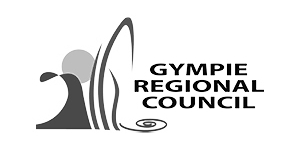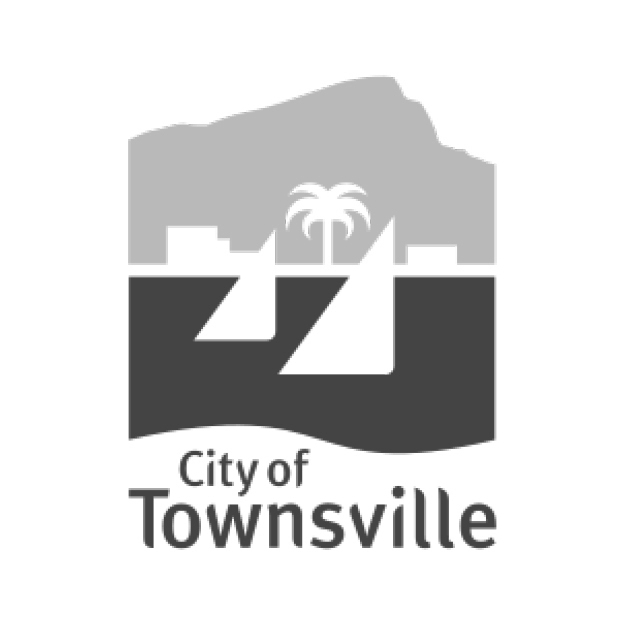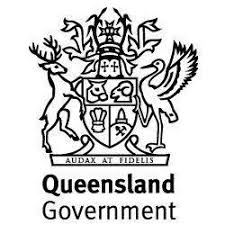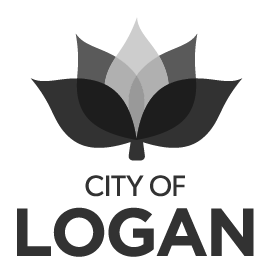The hottest topic in sport facility planning?
As the pressure on public open space continues to grow, how can local governments best plan for effective multi-use of sports grounds?
The need to develop sports grounds to accommodate multiple sports remains a hot topic, particularly in densely-populated or fast-growing communities. Yet it seems that many Councils are still to find the best way to manage and operate multi-use sports grounds to provide successful outcomes for their communities.
In a previous article on this topic (Defining The Rules of The Game – tenure policies for shared facilities, October 2020), I shared stories of warring clubs, at loggerheads over everything from line marking mistakes to deliberate vandalism of fields, and explored the fact that many of the fights that arise between different tenants of sporting facilities stem from a lack of leadership and direction from the local Council. In many cases, this lack of leadership comes from Councillors not wanting to risk their re-election by putting their foot down on a well-defined tenure policy, thinking that the old, handshake deals that gave unreasonable power to clubs will gain them political favour.
Some Councils already do a great job managing community, sport and recreation facilities. Others feel that they are a long way from where they’d like to be. Our experience is that there is no one model of governance for shared sports facilities that works for everyone. This can be because of many factors, such as:
The balance between freehold land and land held in trust for the state or crown
The different types of sports that are sharing facilities
The varying intensity of use that can be accommodated on sports courts versus natural grass sports fields
The reason that sports facility sharing is needed in the first place. Is it because of a lack of available greenspace, as is the case in metro areas? Or is it because there is a lack of money to maintain multiple sporting venues in regional or remote areas? Or is it a lack of resources, like water required for irrigating fields, or even something as interesting as a lack of quality topsoil, like in Mount Isa?
In some cases, sharing is managed at a state level. Cricket Victoria and AFL Victoria, in collaboration with the Victorian Government, have established agreements for the shared use of facilities for cricket and AFL across the state. Likewise, Cricket Victoria and Football Victoria have needed similar agreements, particularly through the post-COVID return to sport in 2020. But this is not the case everywhere. And it’s not just the discussion about season change over dates. There are plenty of considerations that Councils need to make when thinking about rules for shared community facilities.
So where should a Council wishing to develop a community leasing policy or a tenure policy for shared use of sports grounds begin? We believe that it takes three things to develop great relationships between clubs, and between clubs and Council in shared use settings:
Strong leadership from Council, based on a clear philosophy
Objective rules in a formal tenure policy and implementation procedures
And ongoing engagement with tenants to build their capacity
Philosophy
When determining their policy position, Councils should start by understanding their philosophy for what they want to achieve through shared use of sports grounds. In setting up their philosophy, Councils should consider a range of factors that can be different for each Council area:
Demand
What is the real demand for sports facilities? This is where it’s important to understand the difference between wants and needs. Wants are things that would be nice to have, but that are not essential. I fully support clubs in planning for these nice-to-have things, as they improve the level of service they can offer to their members. From a Council perspective, a genuine need should be informed by data-driven analysis.
For instance, a need will show up in our sport and recreation facility demand strategies, where we compare Ausplay data with local participation data and trends, existing supply, facility capacity and population forecasts to come up with true and defensible sports facilities needs for, say, the next 20 years. Using this real data, which of course also includes input from users, we can then work out which facilities can be best shared, and we would know which sports have the greatest needs to be accommodated.
Design and maintenance standards
A Council’s philosophy for facility sharing will be reflected in how it develops facility design standards and facility maintenance standards. If a Council is sincere in seeking successful facility sharing outcomes, it must commit to facility designs and regular maintenance regimes that will support a higher level of intensity of use than would be generated at single-use facilities. Its philosophy must therefore be linked to a commitment to regular, sufficient investments, both for capital development and ongoing operations.
Cost recovery model
Where on the spectrum of cost recovery does the Council seek to place itself? Should sports facilities be run on a full cost recovery basis with a 100% user-pays model (which is admittedly very rare, given the community service obligations of Councils)? Or should facilities be provided completely free of charge (which is also rare, thankfully, as clubs tend to disrespect facilities if they don’t have any ‘skin in the game’)?
Wherever Councils choose to set their cost recovery model, they can make it work, so long as it is a deliberate decision and they commit to sufficient OpEx budget allocations each year to support their position. To begin, I suggest that Councils develop a clear picture of the level of service they wish to provide to their community groups (see The ‘Level of Service Continuum’, February 2021, as this can apply equally well to Councils as to sports clubs). What quality of facilities do they want to provide at a local, district and regional level, and what would be a reasonable fee for that level of service? The key here is sustainability. The level of service and cost recovery model should be set so that multi-purpose sports facilities will remain viable, for both users and Council, for the long term.
Serviceability
Serviceability in this context means the ability for sports organisations to pay their way. For instance, do they have, or can they develop other revenue streams to ensure they can cover their fair share of the costs? Interestingly, simply requiring clubs to pay some reasonable amount towards facility maintenance can inspire them to run better, more sustainable businesses in their own right.
Tenure models
Councils may develop a preference for tenure models based on their philosophy. Do they prefer to offer greater security of tenure and a sense of ownership to user groups through leases? Or would they rather maintain greater control by limiting their arrangements to seasonal bookings? Tenure models can include:
Leases - usually for five to 10-year terms
Licences, permits to occupy, right of use agreements or management agreements - usually for one to three years
Seasonal bookings - year-by-year agreements for the respective sporting season only
Head lease with sublessees
2. Objective rules
As I mentioned last time, it’s when Councils enter into a tenure agreement with clubs that all of the ‘rules’ should be clearly laid out. This gives everyone an opportunity to consider their benefits and obligations together. Council’s tenure policies and implementation procedures should set the objective standard that clubs can turn to for answers before problems escalate.
What matters in Council’s policy for the shared use of multi-use sports grounds is consistency and support.
Consistency
Consistency means that the policy is applied in all relevant cases, not just those that are the pet sports of the CEO or Councillors.
Support
Support means that Council should be able to use the policy to empower its tenant clubs to get the highest and best use out of their facilities, and to have the courage needed to support clubs in the face of some NIMBY type neighbours who, despite buying property next to sports fields, complain incessantly about whistles and kids having fun!
When we surveyed people from 95 different Councils recently to ask them how satisfied they were with their policy for managing the shared use of sports facilities, only 3% of them thought that their policy was any good! 64% thought that their policy was ok but needed improvement, 17% thought their policy was terrible and the remaining 16% still didn’t even have a policy!
These results justify my strong preference that Council community tenure policies and procedures be reviewed regularly. Where they don’t exist, the sooner they are developed, the sooner they can help settle disputes over shared sports grounds. And when they are adopted, their review should be thorough, involving an objective assessment of how the policy is performing in supporting good relationships between sharing clubs, and between clubs and Council.
Tenure policies should also consider:
How you manage commercial uses of community land (e.g. personal trainers, canteens and bars, major events)
How you manage licensed venues that compete with pubs, not just other sports clubs (e.g. with scaled or tiered charging models for large venues with gaming licenses)
Maintaining reasonable ‘transaction costs’ in implementing your charging structures and cost recovery models
3. Ongoing engagement
Multi-use sports facility governance systems, including a really good policy and solid tenure arrangements, are critical. But that’s not all it takes. Multi-use of sports grounds is not a set-and-forget topic. It takes good people, good governance and good communication to develop creative solutions to the ongoing challenges faced at shared sporting facilities.
Good people
Firstly, it takes good people in the clubs that use shared sports facilities. The main reason that you can’t set a tenure policy once and forget it is that these good people are mostly volunteers, who give up their time for free, and who may be replaced every year if committee members are not re-elected. They bring passion and great interest in their sport, but not necessarily much in the way of good club governance skills.
Good governance
Councils therefore have a great opportunity to provide governance support and regular training and mentoring for volunteers, to head off disputes before they get a chance to fester. This can be by offering clubs online and in-person governance support and training, through to setting up a one-stop-shop for community tenants.
For instance, clubTRAC gives clubs on-demand access to training videos, documents, resources and templates, provides automated reminders ahead of important dates like their AGM, planning review and tenure expiry, and is the one place where volunteers can go to share their documents with Council, like annual returns and insurance certificates.
In the same survey of people from 95 Councils, only 7% rated the support they provide to their sports clubs at five stars. The result showed a distinct bell-curve distribution, with most thinking that their support should be improved.
Good communication
‘Good’ communication is as simple as regular communication. For us humans, there’s nothing nicer than really feeling heard. Because of the transient nature of club committees, regular communication is vital to ensure that incoming committee members of clubs that share facilities can learn the rules quickly.
Good communication works both ways. If you’re in a club that shares facilities, don’t just whinge and moan. Go and engage directly with the other clubs and with Council, and do it regularly.
If you’re a Council officer that struggles to find time to have meaningful conversations with your club volunteers, is that because you’re too busy chasing up last year’s financial statements, or following up on facility maintenance tasks that clubs haven’t completed? Incidentally, this is exactly why we developed our systems like clubTRAC and assetTRAC, to automate as many of those types of tasks as possible, to give Council officers the time to engage with their clubs meaningfully.
The obvious ‘elephant in the room’ is the political landscape in most Councils. Where Councils don’t have tenure policy frameworks, or where they exist but are inadequate, it’s important for Councillors to avoid the temptation to bury their head in the sand, feeling that it could be politically unpopular for them to enforce formal tenure on clubs. However, it is absolutely worth the effort to set up consistent systems that support Council and clubs, and provide adequate levels of support for the long term.
One final word - it should be a journey, not a jump. If you do decide to make a change, like implementing a new tenure policy that changes things significantly, it’s always best to phase it in over a few seasons, including telegraphing the changes you’ll be making in coming years, so that everyone knows what is coming beforehand.
CPR Group has helped lots of Councils both develop and review their community tenure policies for more than 25 years. Here are a couple of questions for you to ponder as you consider if your Council should have a critical look at the way it manages shared use of community sports grounds:
How satisfied are you with your Council's policy for managing the multi-use of sporting facilities?
How confident are you that your current community tenure policy and procedures could help manage disputes between clubs?
How would you rate the support that your Council provides to its local sports clubs?
For more on this topic, also check out episode 20 of our podcast, Basket Case Clubs - "Get off my field!" - Dealing with conflict over shared sports facilities, available on our website or wherever you access your podcasts.




























